Where Can You See Perseid Meteor Shower in Jphnson County Texas 2018
By Bill Cooke, NASA Meteoroid Environments Office
Many Perseid-related news stories and social media posts state that the maximum rate is about 100 meteors per hour, which is a lot. So, folks get excited and go out on the peak night, braving mosquitos and other nightly hazards. But they are often disappointed; we routinely hear, "I went out and only saw a few meteors. Not even 20, much less 100!" And they would be right. The problem is that the 100 per hour is a theoretical number used by meteor scientists and does not convey what people are actually going to see.
In the 1980's, meteor researchers were searching for a way to compare the meteor shower rates observed by various individuals and groups across the globe. People were reporting the rates, but the differences in sky conditions, radiant altitude and observer eyesight made getting a comprehensive view of shower activity difficult.
So, the meteor researchers put their heads together and came up with the concept of a ZHR, or Zenithal Hourly Rate. The ZHR is what you get after you correct the observed rates for the sky conditions, the altitude of the radiant above the horizon and observer biases. In other words, it is basically what a perfect observer would see under perfect skies with the meteor shower radiant straight overhead – which never happens!
The often-quoted ZHRs overestimate the meteor rates people actually see – sometimes by a lot. Fortunately, we can take the ZHR and invert things to get the hourly rates for certain locations and circumstances – it's only math, after all. We have done this for select locations in the United States, producing the following maps.
These maps show the hourly rates that can be expected on the night of the Perseid shower's peak, provided there are no clouds in the sky. (It's hard to account for partial cloud cover.)
These rates assume you are out in the country, where lots of stars and the Milky Way are visible and no clouds, of course:
 So, instead of 100 Perseids per hour, people in the U.S. can reasonably expect to see around 40-ish Perseids in the hour just before dawn on the peak nights. That's about one every couple of minutes – not bad. However, we are assuming you are out in the country, well away from cities and suburbs.
So, instead of 100 Perseids per hour, people in the U.S. can reasonably expect to see around 40-ish Perseids in the hour just before dawn on the peak nights. That's about one every couple of minutes – not bad. However, we are assuming you are out in the country, well away from cities and suburbs.
What rates can you expect if you want to do your Perseid watching from the neighborhood? We also computed that:
 The brighter skies of the suburbs greatly cut down the rates. We have gone from a Perseid every couple of minutes to one every 6-7 minutes – a factor of three reduction. This explains the great disappointment expressed by many casual Perseid watchers; they go outside, expecting to see at least a meteor a minute and end up with 10 or less in an hour. The brightness of your sky is everything in meteor observing – you have to get away from the lights!
The brighter skies of the suburbs greatly cut down the rates. We have gone from a Perseid every couple of minutes to one every 6-7 minutes – a factor of three reduction. This explains the great disappointment expressed by many casual Perseid watchers; they go outside, expecting to see at least a meteor a minute and end up with 10 or less in an hour. The brightness of your sky is everything in meteor observing – you have to get away from the lights!
But what about those in cities? The rates are close to zero:
 Ugh! City dwellers might see a Perseid or two in an hour. Not very inspiring. Perhaps the only good news is that, if someone in a city sees a Perseid, it has to be really, really bright and spectacular.
Ugh! City dwellers might see a Perseid or two in an hour. Not very inspiring. Perhaps the only good news is that, if someone in a city sees a Perseid, it has to be really, really bright and spectacular.
Want to see Perseids? Then head out into the dark – it's worth it!
Check out our previous blog post, The Perseids are on the Rise, for more information on the Perseids and tips on how to observe them.
It's time again for one of the biggest meteor showers of the year! The Perseids are already showing up in our night skies—and when they peak in mid-August, it's likely to be one of our most impressive skywatching opportunities for a while.
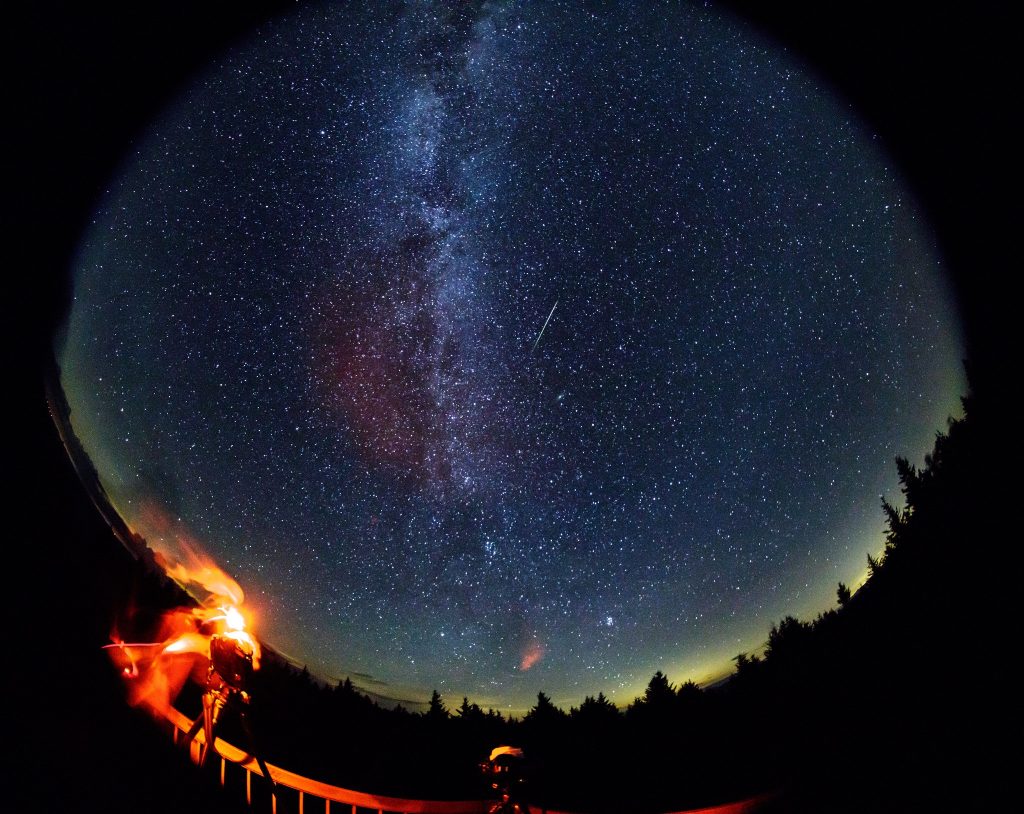
Our meteor-tracking cameras spotted their first Perseid on July 26, but your best chance to see them will start the night of Aug. 11. With the crescent moon setting early, the skies will be dark for the peak viewing hours of midnight (local time) to dawn on Aug. 12.
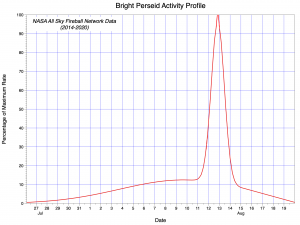
If you're in the Northern Hemisphere, and far away from light pollution, you might spot more than 40 Perseids an hour! (If you're in a city, you may only see a few every hour; skywatchers in the Southern Hemisphere will also see fewer Perseids, with none visible below about 30 degrees south latitude.) The night of Aug. 12-13 will be another great opportunity to see the Perseids: with a full Moon (and lower meteor activity) during the Perseids' peak in 2022 and a waning crescent high in the sky for 2023, this might be your best chance to do some summer skywatching for a few years.
Find somewhere comfortable, avoiding bright lights as much as possible (yes, including your phone), and give your eyes some time to adjust to the dark—up to half an hour if you can. The Perseids will appear as quick, small streaks of light: they get their name because they look like they're coming from the direction of the constellation Perseus (near Aries and Taurus in the night sky), but Perseids in that area can be hard to spot from the perspective of Earth. So just look up and enjoy the show!
If you can't see the Perseids where you live, join NASA to watch them on social media! Tune in overnight Aug. 11-12 (10 PM–5 AM CDT; 3–10 AM UTC) on Facebook, Twitter and YouTube to look for meteors with space fans from around the world. If skies are cloudy the night of Aug. 11, we'll try again the same time on Aug. 12-13. Our livestream is hosted by the Meteoroid Environment Office at NASA's Marshall Space Flight Center, which tracks meteors, fireballs, and other uncommon sights in the night sky to inform the public and help keep our astronauts and spacecraft safe.
Where do the Perseids *actually* come from?
The Perseids are fragments of the comet Swift-Tuttle, which orbits between the Sun and beyond the orbit of Pluto once every 133 years. Every year, the Earth passes near the path of the comet, and the debris left behind by Swift-Tuttle shows up as meteors in our sky. (Don't worry, there's no chance that we'll run into the actual comet anytime soon.)
Where can I go to learn more?
We've got some great space-rock lessons for students, starting with the biggest question: what's the difference between an asteroid and a meteor? Our NASA Space Place site also has a kid-friendly introduction to meteor showers in general. If you're looking for something a little more hands-on, try this asteroid-building classroom activity—or, for an older audience, learn how to describe rocks like a NASA scientist.
And, if you want to know what else is in the night sky this month, check out the video below from Jet Propulsion Laboratory's monthly "What's Up" video series:
Happy skywatching!
by Brice Russ
By Emily Clay
The Perseid meteor shower is here! With Comet NEOWISE making its way out of the solar system, it is time for a celestial show caused by a different comet. Perseid meteors, caused by debris left behind by the Comet Swift-Tuttle, began streaking across the skies in late July and will peak in the pre-dawn hours of Aug. 12.
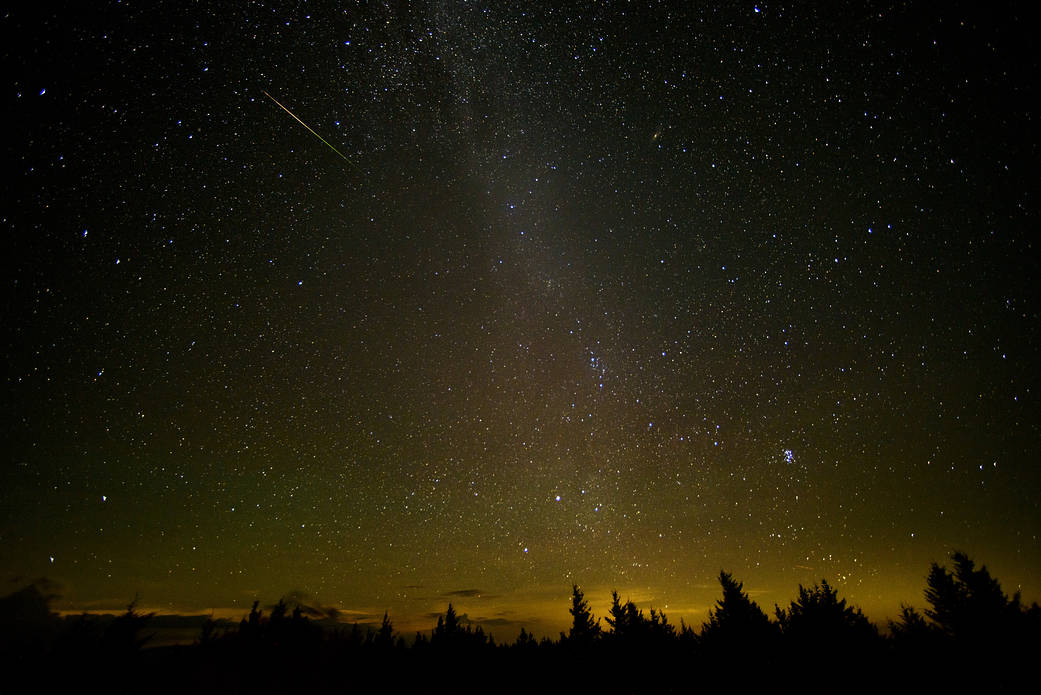
The Perseid meteor shower is often considered to be one of the best meteor showers of the year due to its high rates and pleasant late-summer temperatures. This year's shower, however, has the unfortunate circumstance of the Moon phase—last quarter—impeding the view of the shower peak, reducing the visible meteors from over 60 per hour down to 15-20 per hour. But the Perseids are rich in bright meteors and fireballs, so it will still be worth going out in the early morning to catch some of nature's fireworks.
WHEN SHOULD I LOOK?
Make plans to stay up late the night of Aug. 11 or wake up early the morning of Aug. 12. The Perseids are best seen between about 2 a.m. your local time and dawn. The Moon rises at around midnight, so its brightness will affect the peak viewing window. However, even though the Moon's phase and presence will keep the frequency of visible meteors lower, there is still nearly one meteor every two minutes during the peak!
If those hours seem daunting, not to worry! You can go out after dark, around 9 p.m. local time, and see a few Perseids. Just know that you won't see nearly as many as you would had you gone out during the early morning hours.
How can you see the Perseids if the weather doesn't cooperate where you are? A live broadcast of the meteor shower from a camera at NASA's Marshall Space Flight Center in Huntsville, Alabama, (if our weather cooperates!) will be available on the NASA Meteor Watch Facebook starting around 8 p.m. CDT on Aug. 11 and continuing until sunrise on Aug. 12. Meteor videos recorded by the NASA All Sky Fireball Network are also available each morning; to identify Perseids in these videos, look for events labeled "PER."
WHY ARE THEY CALLED PERSEIDS?
All meteors associated with one particular shower have similar orbits, and they all appear to come from the same place in the sky, called the radiant. Meteor showers take their name from the location of the radiant. The Perseid radiant is in the constellation Perseus. Similarly, the Geminid meteor shower, observed each December, is named for a radiant in the constellation Gemini.
HOW TO OBSERVE PERSEIDS
If it's not cloudy, pick an observing spot away from bright lights, lay on your back, and look up! You don't need any special equipment to view the Perseids – just your eyes. (Note that telescopes or binoculars are not recommended because of their small fields of view.) Meteors can generally be seen all over the sky so don't worry about looking in any particular direction.
While observing this month, not all of the meteors you'll see belong to the Perseid meteor shower. Some are sporadic background meteors. And some are from other weaker showers also active right now, including the Alpha Capricornids, the Southern Delta Aquariids, and the Kappa Cygnids. How can you tell if you've seen a Perseid? If you see a meteor try to trace it backwards. If you end up in the constellation Perseus, there's a good chance you've seen a Perseid. If finding constellations isn't your forte, then note that Perseids are some of the fastest meteors you'll see!
Pro tip: Remember to let your eyes become adjusted to the dark (it takes about 30 minutes) – you'll see more meteors that way. Try to stay off of your phone too, as looking at devices with bright screens will negatively affect your night vision and hence reduce the number of meteors you see!
Happy viewing!
A live broadcast of the meteor shower from a camera in Huntsville, AL (if our weather cooperates!) will be available on NASA TV and the NASA Meteor Watch Facebook starting around 9 p.m. Eastern time (8 p.m. CT) and continuing until the early hours of August 13.
The Perseid meteor shower is here! Perseid meteors, caused by debris left behind by the Comet Swift-Tuttle, began streaking across the skies in late July and will peak on August 12.
The Perseid meteor shower is often considered to be one of the best meteor showers of the year due to its high rates and pleasant late-summer temperatures. This year's shower peak, however, has the added bonus of dark skies courtesy of an early-setting crescent Moon. Combine these ideal observing conditions and high rates (an average of 60 meteors per hour at the peak) with the fact that the best nights for viewing – August 11 to 12 and August 12 to 13 – occur on a weekend and you have a recipe for successfully viewing some celestial fireworks!
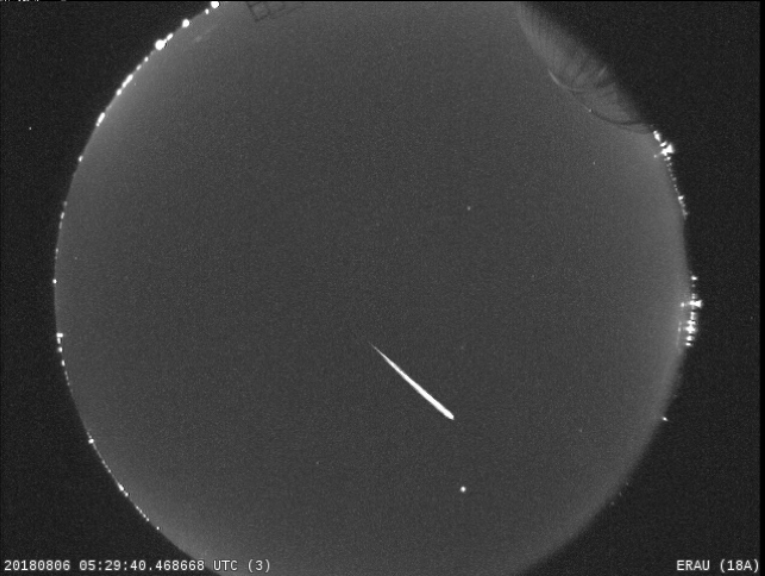
When Should I Look?
Make plans to stay up late or wake up early the nights of August 11 to 12 and August 12 to 13. The Perseids are best seen between about 2 a.m. your local time and dawn.
If those hours seem daunting, not to worry! You can go out after dark, around 9 p.m. local time, and see Perseids. Just know that you won't see nearly as many as you would had you gone out during the early morning hours.
How can you see the Perseids if the weather doesn't cooperate where you are? A live broadcast of the meteor shower from a camera in Huntsville, AL (if our weather cooperates!) will be available on the NASA Meteor Watch Facebook starting around 8 p.m. CT and continuing until the early hours of August 13. Meteor videos recorded by the NASA All Sky Fireball Network are also available each morning; to identify Perseids in these videos, look for events labeled "PER."
Why Are They Called Perseids?
All meteors associated with one particular shower have similar orbits, and they all appear to come from the same place in the sky, called the radiant. Meteor showers take their name from the location of the radiant. The Perseid radiant is in the constellation Perseus. Similarly, the Geminid meteor shower, observed each December, is named for a radiant in the constellation Gemini.

How to Observe Perseids
If it's not cloudy, pick an observing spot away from bright lights, lay on your back, and look up! You don't need any special equipment to view the Perseids – just your eyes. (Note that telescopes or binoculars are not recommended.) Meteors can generally be seen all over the sky so don't worry about looking in any particular direction.
While observing this month, not all of the meteors you'll see belong to the Perseid meteor shower. Some are sporadic background meteors. And some are from other weaker showers also active right now, including the Alpha Capricornids, the Southern Delta Aquariids, and the Kappa Cygnids. How can you tell if you've seen a Perseid? If you see a meteor try to trace it backwards. If you end up in the constellation Perseus, there's a good chance you've seen a Perseid. If finding constellations isn't your forte, then note that Perseids are some of the fastest meteors you'll see!
Pro tip: Remember to let your eyes become adjusted to the dark (it takes about 30 minutes) – you'll see more meteors that way. Try to stay off of your phone too, as looking at devices with bright screens will negatively affect your night vision and hence reduce the number of meteors you see!
Happy viewing!
By Bill Cooke
At NASA, we get very excited about many astronomical events — to name just a few, the return of Halley's Comet back in 1985/86; the impact of the fragments of Comet Shoemaker-Levy 9 with Jupiter in 1992; the Leonid meteor storms of 1998, 1999, 2001 and 2002; and, of course, the upcoming total solar eclipse on Aug. 21 of this year.
Some of these events get blown a bit out of proportion. A classic example is that every time Mars comes to opposition (closest approach to Earth), the internet reverberates with the very false statement that Mars will appear as large as the Moon at that time. Nothing could be farther from the truth, as Mars, at its very closest to Earth, appears only 1/70th the apparent diameter of the Moon.
This year we have a new one — reports are circulating that this year's Perseids will be the "brightest shower in recorded human history," lighting up the night sky and even having some meteors visible during the day. We wish this were true… but no such thing is going to happen.
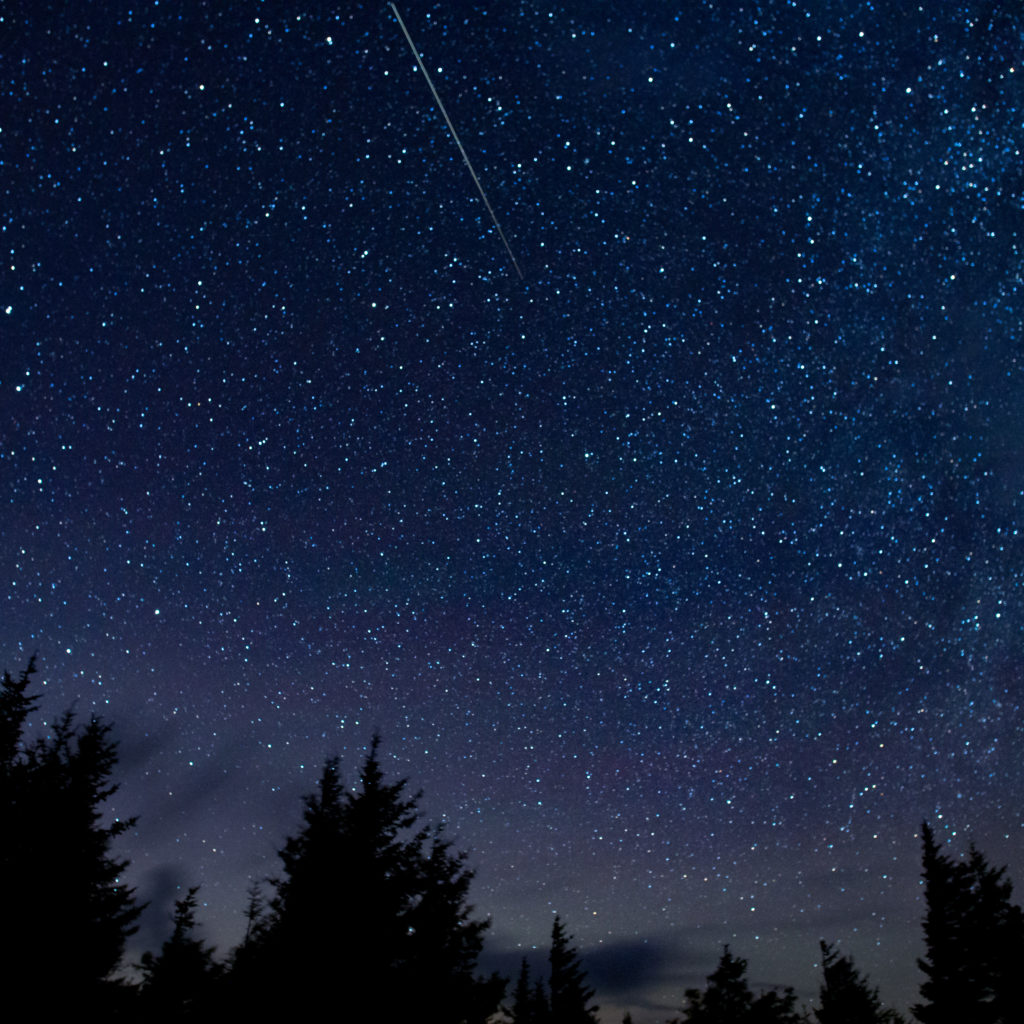
For one thing, the Perseids never reach storm levels (thousands of meteors per hour). At best, they outburst from a normal rate between 80-100 meteors per hour to a few hundred per hour. The best Perseid performance of which we are aware occurred back in 1993, when the peak Perseid rate topped 300 meteors per hour. Last year also saw an outburst of just over 200 meteors per hour.
This year, we are expecting enhanced rates of about 150 per hour or so, but the increased number will be cancelled out by the bright Moon, the light of which will wash out the fainter Perseids. A meteor every couple of minutes is good, and certainly worth going outside to look, but it is hardly the "brightest shower in human history." The Leonid meteor storms of the late 1990's and early 2000's were much more spectacular, and had rates 10 times greater than the best Perseid display.
So, if not this year's Perseid shower, what was the greatest meteor show of all time? I think many meteor researchers would give that award to the 1833 Leonids, which had rates of tens of thousands, perhaps even 100,000, meteors per hour. During a good Perseid shower under ideal conditions, you can see about one meteor per minute. Now imagine yourself being back in 1833, on the night of Nov. 12. Looking outside, you would see something like 20 to 30 meteors PER SECOND. No wonder we read accounts like this one from South Carolina (Chambers,A Handbook of Descriptive and Practical Astronomy, Volume 1, 1889):
"Upwards of 100 lay prostrate on the ground…with their hands raised, imploring God to save the world and them. The scene was truly awful; for never did rain fall much thicker than the meteors fell towards the Earth; east, west, north and south, it was the same."
Now, THAT's a meteor shower. The 1833 storm had a profound effect on those that witnessed it; it also gave birth to modern meteor science. Those of us who study meteors dream of such a display happening sometime within our lifetimes.
But it won't be caused by this year's Perseids.
Cooke leads NASA's Meteoroid Environment Office at the agency's Marshall Space Flight Center.
This composite image shows the meteors detected by the NASA All Sky Fireball Network station here in Huntsville, Alabama this morning. The majority of the meteors are Perseids, but a handful belong to the Northern Delta Aquariid, Southern Delta Aquariid, Alpha Capricornid, and Southern Iota Aquariid meteor showers that are also active.

This Perseid meteor was observed by the NASA Wide-field Meteor Camera Network in the skies over Huntsville, Alabama on the morning of August 12.

The Perseids are ramping up! Here's a Perseid meteor captured by the NASA All Sky Fireball Network on August 4th. The shower will peak the morning of August 13th. With a near-new Moon, we may get a good show that morning!


Enjoy a summer evening of sky watching as the annual Perseid meteor shower peaks on the night of August 12 through the morning of August 13. Join meteor experts from NASA's Marshall Space Flight Center for live Ustream commentary during the shower. Perseid meteor rates can get as high as 100 per hour, with many fireballs visible in the night sky
How to View the Perseid meteor shower
The best opportunity to see the Perseid meteor shower is during the dark, pre-dawn hours of August 13. The Perseidss streak across the sky from many directions. For optimal viewing, find an open skyline, where you can view the horizon without obstructions, such as buildings or trees. Try to view the Perseids as far away from artificial lights as possible. The darker the sky, the better viewing experience you can have. Lie on the ground and look straight up. Remember, your eyes can take up to 30 minutes to adjust to the darkness, so allow plenty of time for your eyes to adjust.
About the Perseids
The Perseids have been observed for at least 2,000 years and are associated with the comet Swift-Tuttle, which orbits the sun once every 133 years. Every August, the Earth passes through a cloud of the comet's debris. This debris field consists of bits of ice and dust — most over 1,000 years old — and burns up in Earth's atmosphere to create one of the best meteor showers of the year. The Perseids can be seen all over the sky, but the best viewing opportunities will be across the northern hemisphere. Those with sharp eyes will see that the meteors radiate from the direction of the constellation Perseus.
NASA Ustream: Observe the Perseid Meteor Shower
On Aug. 12, NASA's Marshall Space Flight Center in Huntsville, Alabama, will host a live Ustream broadcast about the Perseid meteor shower. The event will highlight the science behind the Perseids, as well as NASA research related to meteors and comets. The broadcast will air 9 p.m. CDT Aug. 12, to 1 a.m. CDT Aug. 13 on the following Ustream channel: http://www.ustream.tv/channel/nasa-msfc
Special guests will include meteor experts Dr. Bill Cooke, Danielle Moser and Rhiannon Blaauw, all of NASA's Micrometeoroid Office, located at Marshall. They will provide on-air commentary, as well as answer questions online, using Marshall social media accounts. Also scheduled to join the broadcast, via telephone, are experts from NASA's Johnson Space Center, in Houston; NASA's Goddard Space Flight Center in Greenbelt, Maryland; the American Meteor Society; the SETI Institute in Mountain View, California; and others.
There are two methods to join the online conversation during the broadcast. NASA followers can tweet questions to "@NASA_Marshall" using the hashtag "#askNASA." Followers may also post questions on the Marshall Facebook account, replying to the 9 p.m. Aug. 12 Perseid "Q&A" post at: https://www.facebook.com/nasamarshallcenter
North America has a pretty good seat for this cosmic event.
1. First, check the visibility map to make sure it's visible from your location.
2. Then check the weather – if you are expecting clouds, then Mother Nature has just rained on your parade and you won't be able to see any meteors from outside your home. However, we will continue to stream clear skies here overnight, trying to find the best view of the night sky from our network of ground based telescopes.
3. If the weather gods are smiling down upon you, find a safe, dark location – away from city lights and lay out beneath the stars. You don't need to look in any particular direction, just straight up, but away from the moon. Meteors can appear all over the sky.
4. Add a lawn chair or sleeping bag and some snacks and you should be set!
Tuesday night, the skies over Huntsville were filled with images of the Perseids meteor shower. This year, the Perseids shower will peak on August 12 and, weather permitting, it will be a sight you won't want to miss.
Join NASA astronomer Bill Cooke and his team of experts at Marshall Space Flight Center on August 12 for an 'Up All Night' web chat as they answer your questions about the Perseids. More information about the chat can be found at https://www.nasa.gov/connect/chat/perseids_2011.html

All meteors seen by Huntsville NASA all sky camera last night
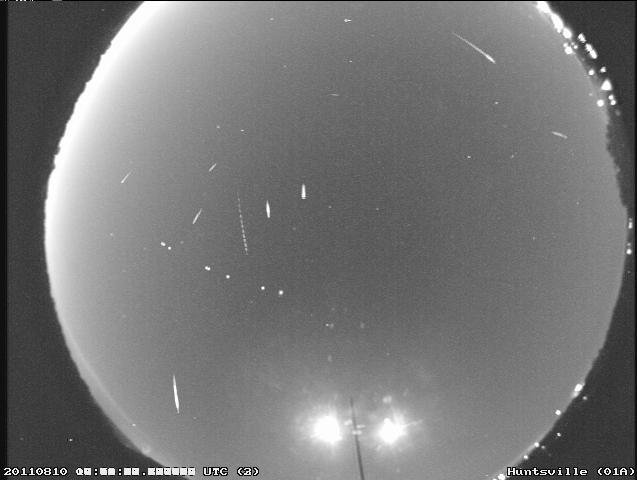
The 10 confirmed Perseids seen by the Huntsville camera last night

Confirmed Perseids seen by the Tullahoma NASA all sky camera last night

Locations of all Perseid meteors recorded by our cameras so far this year
All Images credit: NASA/MSFC/Meteoroid Environment
Where Can You See Perseid Meteor Shower in Jphnson County Texas 2018
Source: https://blogs.nasa.gov/Watch_the_Skies/tag/perseids-meteor-shower/